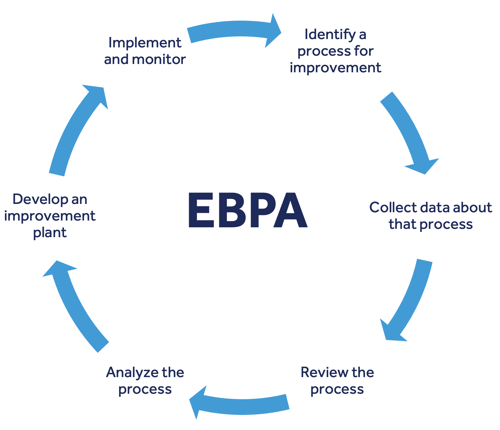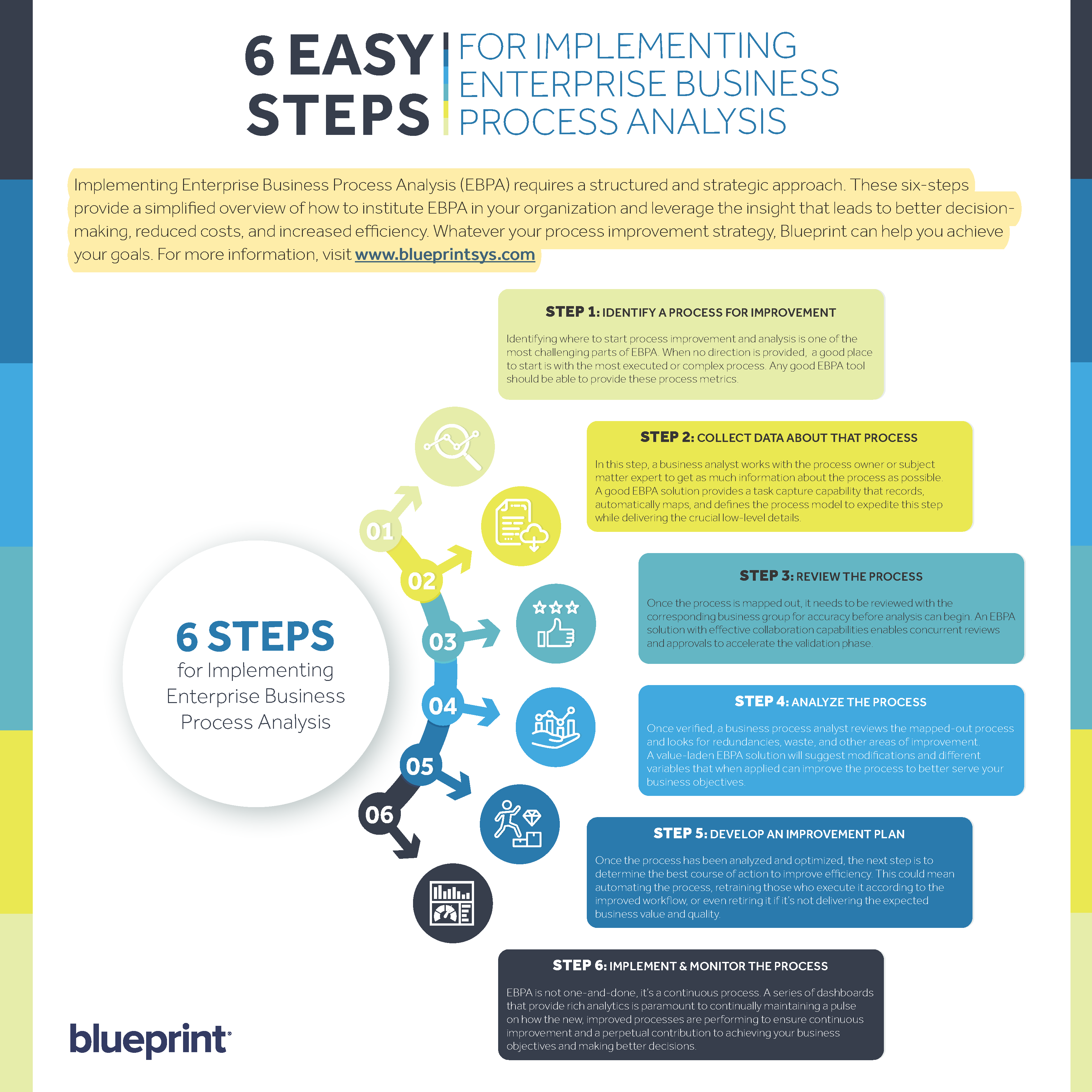6 Easy Steps to Implement Enterprise Business Process Analysis (EBPA)
You can’t make better business decisions if you don’t understand how your business is run. Enterprise Business Process Analysis (EBPA) is a way to solve that significant gap and provide the insight and understanding needed to make better business decisions.
Are your processes aligned with business objectives, value chains, and customer experiences?
Are your processes delivering value? Are they cost-effective? Are they efficient?
EBPA is the method that enables you to answer those questions, but that’s at a high level. Implementing Enterprise Business Process Analysis requires a structured and strategic approach. This is a six-step, simplified method to institute EBPA and leverage the insight that leads to better decision-making, reduced costs, and increased efficiency.

Step 1 – Identify a Process for Improvement
One of the most challenging parts of EBPA is where to start process improvement and analysis. Sometimes this task is made easier by a senior person in your business group that wants to improve efficiency and identifies a process that could be improved.
If no such direction is provided, a good place to start is with the most executed or complex process. Any good EBPA tool should provide you with these process metrics.
Step 2 – Collect Data About that Process
In this step, a business analyst works with the process owner or subject matter expert to get as much information about the process as possible. Naturally, this step also involves mapping out and defining the actual process model to begin analysis and look for process improvements.
Traditionally, this step is executed through a day-in-the-life approach or interview process, which is effective, but also time-consuming and therefore very expensive.
Ideally, a good EBPA solution provides a task capture capability that allows the process owner to record themselves executing the process and automatically maps and defines the process model to expedite this step while delivering the crucial low-level details.
Step 3 – Review the Process
Once the process is mapped out, it needs to be reviewed with the corresponding business group for accuracy before analysis can begin. IT might also need to be involved as the majority of processes in any business will interact with several applications and systems.
An EBPA solution with effective collaboration capabilities enables concurrent reviews and approvals, accelerating the validation phase instead of relying on static digital documents passed around via email that leave the door open for errors, and, often, bottlenecks and delays.
Step 4 – Analyze the Process
After the process model has been verified, a business process analyst or even a team of analysts reviews the mapped-out process and looks for redundancies, waste, and other areas of improvement.
With a value-laden Enterprise Business Process Analysis solution in hand, the processes can have modifications and different variables applied to visualize and understand what changes can improve the process to serve business objectives better.
Step 5 – Develop an Improvement Plan
A crucial step in any EBPA initiative is deciding what to do with the process. Once the process has been analyzed and optimized, the next step is to determine the best course of action to improve efficiency. This could mean automating the process, retraining those who execute it according to the improved workflow, or even retiring it if it’s not delivering the expected business value and quality.
Step 6 – Implement and Monitor the Improved Process
Enterprise Business Process Analysis is not a one-and-done solve-all. It’s a continuous process. Once the improved business process has been implemented, regardless of the output, it must be continuously monitored for quality, efficiency, and effectiveness.
A series of dashboards that provide rich analytics is paramount to continually maintaining a pulse on how the new, improved processes are performing to ensure continuous improvement and a perpetual contribution to achieving your business objectives and making better decisions.
Share this
Recent Stories

What is Lean Six Sigma and How You Can Apply It

What is Value Mapping: Everything You Need to Know




